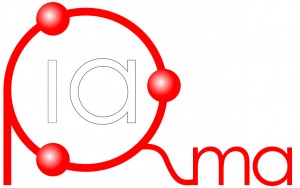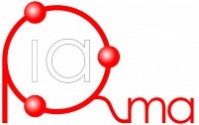Dear valued customers,
We are pleased to announce that the registration for IARMA proficiency tests is now open. As a UK-based company, we offer proficiency testing for laboratories worldwide. Our tests are designed to assess your laboratory’s proficiency in environmental radioactivity, including four (4) proficiency tests:
1- ERAD on the determination of natural and anthropogenic radionuclides in Hay and drinking water.
2- EGROSS on the measurement of gross alpha/beta activities in drinking and seawater.
3- ETRIT on the determination of tritium in water at an environmental level.
4- ECARB on the determination of Carbon-14 in water at an environmental level.
We invite you to participate in our upcoming proficiency tests to demonstrate your laboratory’s capabilities and ensure that your results are accurate and reliable. Our tests are carefully designed to assess your laboratory’s competence in various areas, and we provide a certificate of participation as a piece of evidence.
To register for the ERAD, EGROSS, ETRIT and ECARB proficiency tests, please use the links listed above and follow the registration process. Our team will be happy to assist you with any questions or concerns you may have.
We look forward to your participation in our proficiency tests and helping you achieve your laboratory’s quality goals.
Best regards,
IARMA Team
Dear IARMA Customers,
We are pleased to inform you that the draft reports for the 2024 proficiency tests are now available for download from the IARMA customer portal.
These draft reports offer a comprehensive overview of your laboratory’s performance in the proficiency tests, allowing you to review and analyze the results. Your feedback on the draft reports is valuable to us, and we encourage you to provide any comments or observations by 15 February 2025.
If you encounter any issues or have questions regarding the draft reports, please do not hesitate to reach out to our support team.
Thank you for your continued partnership with IARMA. Your dedication to quality assurance contributes to the overall success of proficiency testing programs.
Best regards,
The IARMA Team

Dear IARMA Proficiency Testing Participants,
This is a friendly reminder that the deadline for reporting your results is approaching. Please ensure that your results are submitted by the target date of November 30th, 2024.
To avoid any delays, we kindly request that you upload your results to the customer portal before the deadline. Timely submission will help us to process and analyze the data efficiently.
Thank you for your participation and cooperation!
Best regards,
IARMA Team
Dear Valued Customers,
We would like to inform you regarding the shipment of the proficiency test items.
Due to unforeseen circumstances, there will be a slight delay in our planned schedule. The shipment of the proficiency test items will now take place starting from 20 August 2024.
Our team is working diligently to ensure that the items reach you as quickly and efficiently as possible.
Thank you for your understanding.
Best regards,
The IARMA Team
Dear valued customers,
We are pleased to announce that the registration for IARMA proficiency tests is now open. As a UK-based company, we offer proficiency testing for laboratories worldwide. Our tests are designed to assess your laboratory’s proficiency in environmental radioactivity, including four (4) proficiency tests:
1- ERAD on the determination of natural and anthropogenic radionuclides in Hay and drinking water.
2- EGROSS on the measurement of gross alpha/beta activities in drinking and seawater.
3- ETRIT on the determination of tritium in water at an environmental level.
4- ECARB on the determination of Carbon-14 in water at an environmental level.
We invite you to participate in our upcoming proficiency tests to demonstrate your laboratory’s capabilities and ensure that your results are accurate and reliable. Our tests are carefully designed to assess your laboratory’s competence in various areas, and we provide a certificate of participation as a piece of evidence.
To register for the ERAD, EGROSS, ETRIT and ECARB proficiency tests, please use the links listed above and follow the registration process. Our team will be happy to assist you with any questions or concerns you may have.
We look forward to your participation in our proficiency tests and helping you achieve your laboratory’s quality goals.
Best regards,
IARMA Team
Dear IARMA Costomers,
We are pleased to announce the release of the final IARMA Proficiency Test Reports! Your feedback is invaluable to us, and we will consider it to enhance your experience.
We have incorporated valuable insights and comments from participants to provide you with even more accurate and comprehensive proficiency test reports.
To Access Your Reports, please Log in to your IARMA Portal and download your updated report.
Thank you for being a part of the IARMA community. We look forward to serving you with enhanced proficiency test.
Best regards,
The IARMA Team

Dear IARMA Customers,
We are pleased to inform you that the draft reports for the 2023 proficiency tests are now available for download from the IARMA customer portal. To access the draft reports, please follow these steps:
These draft reports offer a comprehensive overview of your laboratory’s performance in the proficiency tests, allowing you to review and analyze the results. Your feedback on the draft reports is valuable to us, and we encourage you to provide any comments or observations by 17 January 2024.
If you encounter any issues or have questions regarding the draft reports, please do not hesitate to reach out to our customer support team.
Thank you for your continued partnership with IARMA. Your dedication to quality assurance contributes to the overall success of proficiency testing programs. We look forward to receiving your registration on the next Proficiency Test Scheme which starts on 15 March 2024.
Feedback from a Participating Laboratory for Continual Improvement in Environmental Radioactivity Proficiency Testing
Dear IARMA Community,
The participant recognised that the value of participation as it goes far beyond achieving reliable results; it serves as an opportunity for continual improvement and a demonstration of their technical competence to deliver remarkable outcomes that support quality management system of the organization. The participating laboratory highlighted the achievement of an improvement in their performance year after year.
IARMA Team appreciates the participation and dedication of all participating laboratories for excellence in environmental radioactivity testing.
Many thanks for your continued support and collaboration wishing you all the best for the festivity season.
Best regards,
IARMA Team
Dear IARMA Participants,
IARMA is committed to facilitating a smooth experience for all participants.
Taking into consideration the complexities that can occur during the analysis, and in light of recent feedback from you, we are pleased to announce an extension to the deadline for the Proficiency Test Results Reporting.
The new deadline is now set for November 20, 2023, to ensure that everyone has sufficient time to submit their results without undue pressure.
IARMA Team

Proficiency tests (PT) are becoming a fundamental tool for labs to externally validate and assess the quality of their results. This article explores into the complexities of selecting the right PT and how labs can impact PT providers. Equally, it asks the question if PT providers have responsibilities beyond simply supplying test items and performance reports to laboratories.
This article is highlighting the case of IARMA (International Atomic Reference Material Agency), and offers some insights on IARMA’s Journey: IARMA establishment in 2013, IARMA’s impact in numbers and its customer-centric approach.

